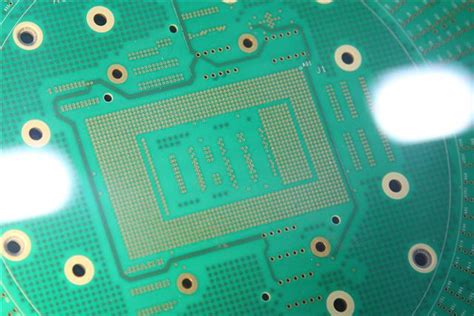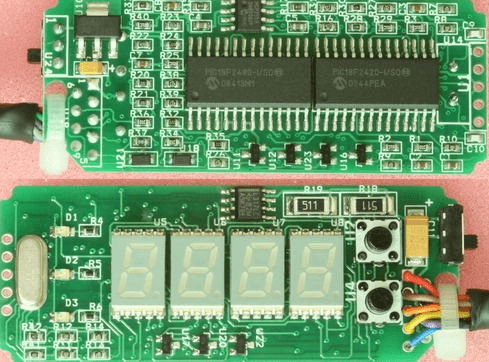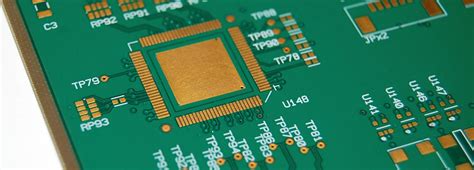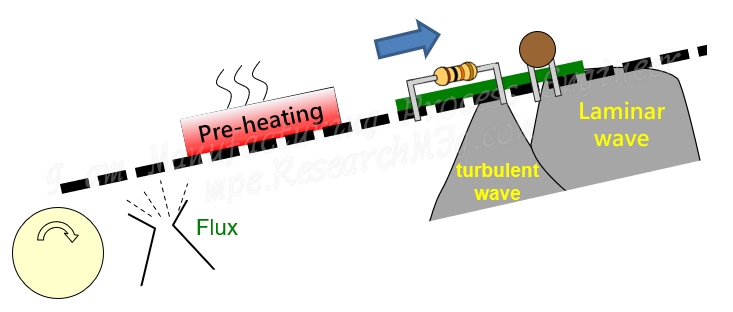PCB Manufacturing Machines: Revolutionizing the Electronics Industry
Introduction
Printed Circuit Boards (PCBs) are the backbone of modern electronics. They are used in virtually every electronic device, from smartphones and computers to medical equipment and automotive systems. The production of PCBs is a complex process that requires precision, efficiency, and reliability. Over the years, advancements in technology have led to the development of sophisticated PCB manufacturing machines that have revolutionized the electronics industry. This article explores the various types of PCB manufacturing machines, their functions, and the impact they have had on the production of PCBs.
1. Overview of PCB Manufacturing Process
Before delving into the specifics of PCB manufacturing machines, it is essential to understand the overall PCB manufacturing process. The process typically involves the following steps:
- Design and Layout: The first step in PCB manufacturing is designing the circuit layout using specialized software. This design is then converted into a format that can be used by the manufacturing machines.
- Printing the Circuit Pattern: The circuit pattern is printed onto a copper-clad laminate using a process called photolithography. This involves applying a light-sensitive material (photoresist) to the laminate and then exposing it to UV light through a mask that contains the circuit pattern.
- Etching: The exposed copper is then etched away using a chemical solution, leaving behind the desired circuit pattern.
- Drilling: Holes are drilled into the PCB to allow for the mounting of components and the creation of vias (electrical connections between layers).
- Plating: The drilled holes are plated with copper to create electrical connections between layers.
- Solder Mask Application: A solder mask is applied to the PCB to protect the copper traces and prevent solder bridges during component assembly.
- Silkscreen Printing: Component labels and other identifying marks are printed onto the PCB using a silkscreen process.
- Surface Finish: A surface finish is applied to the PCB to protect the copper and ensure good solderability.
- Testing and Inspection: The finished PCB is tested and inspected to ensure it meets the required specifications.
- Assembly: Components are mounted onto the PCB using either through-hole or surface-mount technology (SMT).
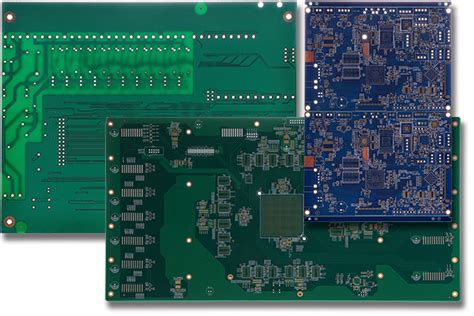
2. Types of PCB Manufacturing Machines
The PCB manufacturing process involves a variety of specialized machines, each designed to perform a specific task. Below are some of the most common types of PCB manufacturing machines:
2.1. PCB Design and Layout Software
While not a physical machine, PCB design software is a critical tool in the PCB manufacturing process. It allows engineers to create detailed circuit layouts, simulate circuit behavior, and generate the files needed for manufacturing. Popular PCB design software includes Altium Designer, Eagle, and KiCad.
2.2. Photoplotters
Photoplotters are used to create the photomasks needed for the photolithography process. These machines use a laser or LED light source to expose a light-sensitive film or glass plate with the circuit pattern. The exposed film or plate is then developed to create the photomask.
2.3. Exposure Machines
Exposure machines are used in the photolithography process to transfer the circuit pattern from the photomask onto the copper-clad laminate. The laminate is coated with a photoresist, and the exposure machine uses UV light to expose the photoresist through the photomask. The exposed areas of the photoresist become either soluble or insoluble, depending on the type of photoresist used.
2.4. Etching Machines
Etching machines are used to remove the unwanted copper from the laminate, leaving behind the desired circuit pattern. The most common etching method is chemical etching, where the laminate is immersed in an etching solution (usually ferric chloride or ammonium persulfate) that dissolves the exposed copper. Some advanced etching machines use plasma etching, which is more precise and environmentally friendly.
2.5. Drilling Machines
Drilling machines are used to create holes in the PCB for component mounting and vias. These machines use high-speed drills to create precise holes with diameters as small as 0.1 mm. Some drilling machines are equipped with automatic tool changers, allowing them to switch between different drill sizes without manual intervention.
2.6. Plating Machines
Plating machines are used to deposit a thin layer of copper onto the walls of the drilled holes, creating electrical connections between layers. The most common plating method is electroless copper plating, where the PCB is immersed in a chemical solution that deposits copper onto the exposed surfaces. Some plating machines also support electroplating, which uses an electric current to deposit copper more quickly and evenly.
2.7. Solder Mask Application Machines
Solder mask application machines are used to apply a protective layer of solder mask onto the PCB. The solder mask is typically applied using a screen printing process, where the solder mask material is forced through a fine mesh screen onto the PCB. Some advanced machines use inkjet printing to apply the solder mask, allowing for more precise control and the ability to create complex patterns.
2.8. Silkscreen Printing Machines
Silkscreen printing machines are used to print component labels, logos, and other identifying marks onto the PCB. These machines use a screen printing process similar to that used for solder mask application. The ink used for silkscreen printing is typically a non-conductive epoxy-based ink that is cured using UV light or heat.
2.9. Surface Finish Machines
Surface finish machines are used to apply a protective coating to the exposed copper traces on the PCB. The most common surface finishes include Hot Air Solder Leveling (HASL), Electroless Nickel Immersion Gold (ENIG), and Organic Solderability Preservative (OSP). Each surface finish has its advantages and disadvantages, and the choice of finish depends on the specific requirements of the PCB.
2.10. Testing and Inspection Machines
Testing and inspection machines are used to ensure that the finished PCB meets the required specifications. These machines include Automated Optical Inspection (AOI) systems, which use cameras and image processing software to detect defects such as missing components, misaligned components, and solder bridges. Other testing machines include In-Circuit Test (ICT) systems, which test the electrical functionality of the PCB, and Flying Probe Testers, which use movable probes to test individual components and connections.
2.11. Pick-and-Place Machines
Pick-and-place machines are used in the component assembly process to place surface-mount components onto the PCB. These machines use vacuum nozzles to pick up components from reels or trays and place them onto the PCB with high precision. Some pick-and-place machines are capable of placing thousands of components per hour, making them essential for high-volume production.
2.12. Reflow Ovens
Reflow ovens are used to solder surface-mount components onto the PCB. The PCB is passed through the oven on a conveyor belt, where it is heated to a temperature that melts the solder paste, creating a permanent electrical and mechanical connection between the components and the PCB. Reflow ovens are available in various configurations, including convection ovens, infrared ovens, and vapor phase ovens.

3. Advancements in PCB Manufacturing Machines
The PCB manufacturing industry has seen significant advancements in recent years, driven by the increasing demand for smaller, more complex, and higher-performance electronic devices. Some of the key advancements in PCB manufacturing machines include:
3.1. Automation and Robotics
Automation and robotics have become increasingly prevalent in PCB manufacturing, particularly in high-volume production environments. Automated machines can perform tasks such as drilling, plating, and component placement with greater speed and precision than manual methods. Robotics are also being used for tasks such as PCB handling, inspection, and testing, reducing the need for human intervention and minimizing the risk of errors.
3.2. Additive Manufacturing
Additive manufacturing, also known as 3D printing, is beginning to make its way into the PCB manufacturing industry. While traditional PCB manufacturing is a subtractive process (where material is removed to create the circuit pattern), additive manufacturing builds up the circuit pattern layer by layer. This approach allows for the creation of more complex and customized PCB designs, as well as the integration of components directly into the PCB.
3.3. Advanced Materials
The development of advanced materials is also driving innovation in PCB manufacturing machines. For example, the use of flexible and rigid-flex PCBs, which can bend and flex without breaking, requires specialized manufacturing equipment. Similarly, the use of high-frequency materials for RF and microwave applications requires machines that can handle these materials with precision and care.
3.4. Industry 4.0 and Smart Manufacturing
The concept of Industry 4.0, or the fourth industrial revolution, is transforming the PCB manufacturing industry. Smart manufacturing systems, which integrate advanced technologies such as the Internet of Things (IoT), artificial intelligence (AI), and big data analytics, are being used to optimize the PCB manufacturing process. These systems can monitor and control every aspect of the manufacturing process in real-time, improving efficiency, reducing waste, and ensuring consistent quality.
4. Impact of PCB Manufacturing Machines on the Electronics Industry
The advancements in PCB manufacturing machines have had a profound impact on the electronics industry. Some of the key benefits include:
4.1. Increased Production Speed
Modern PCB manufacturing machines are capable of producing PCBs at much higher speeds than traditional methods. This has enabled manufacturers to meet the growing demand for electronic devices, particularly in industries such as consumer electronics, telecommunications, and automotive.
4.2. Improved Precision and Quality
The precision and accuracy of modern PCB manufacturing machines have significantly improved the quality of PCBs. This has led to the production of more reliable and high-performance electronic devices, with fewer defects and failures.
4.3. Reduced Costs
Automation and advanced manufacturing techniques have helped to reduce the cost of PCB production. This has made electronic devices more affordable for consumers and has enabled manufacturers to remain competitive in a rapidly evolving market.
4.4. Greater Design Flexibility
The ability to produce more complex and customized PCB designs has opened up new possibilities for electronic device design. This has led to the development of innovative products with new features and capabilities, driving further growth in the electronics industry.
4.5. Environmental Benefits
Advancements in PCB manufacturing machines have also led to more environmentally friendly production processes. For example, the use of lead-free solder and the development of more efficient etching and plating processes have reduced the environmental impact of PCB manufacturing.
Conclusion
PCB manufacturing machines have come a long way since the early days of the electronics industry. Today, they are highly sophisticated, automated, and capable of producing PCBs with incredible precision and speed. These machines have revolutionized the electronics industry, enabling the production of smaller, more complex, and higher-performance electronic devices. As technology continues to advance, we can expect to see further innovations in PCB manufacturing machines, driving continued growth and evolution in the electronics industry.

